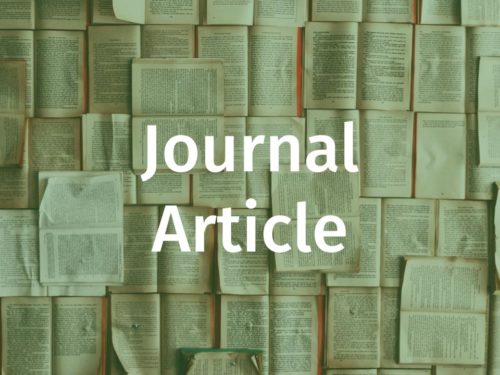The Palestinian economy remains captive to the Israeli market. Sansour and Tartir
In the second instalment of this series of articles on the destructive consequences of reconstruction efforts in Gaza, I look at how humanitarian assistance and international aid create and reinforce economic dependence of Palestinians on the Israeli occupier.
In the past, stateless Palestinian organisations had been dependent on their host countries, their funders and groups in international solidarity, but the dependence of Palestinians created by Oslo is qualitatively different, as they were now directly dependent on their occupier and the US, Israel’s biggest ally.

The PA’s economic dependence on – or integration into – Israeli economy was laid down in the Paris Protocol, which obligates the PA to implement the Israeli trade and tariff policy without being able to influence it. It regulates trade policy, taxation and stipulated that foreign aid had to go through Israel. Furthermore, Israel is in charge of Palestinian water resources, energy supplies, air space, and external borders. It confiscated large areas of land for the construction of settlements and gave settlers control over 87% of the irrigated land in the entire West Bank. Furthermore, the agreement rendered the Occupied Palestinian Territories (OPT) thoroughly dependent on imported goods (70 to 80 per cent of GDP), paid for by either indirect taxes – collected by Israel and then transferred to the PA – or external aid.
In light of this dependence on Israeli goodwill, the ability to engage in economic activities came with the price of surrendering to the occupation says Ismail Hanieh. He further delineates how the economic set-up under Oslo succeeded in aligning the interests of the Palestinian business elite, the PA bureaucracy and parts of the PLO with those of the occupation. Hanieh states,
The two-state strategy embodied in Oslo has produced a social class that draws significant benefits from its position atop the negotiation process and its linkages with the structures of occupation. This is the ultimate reason for the PA’s supine political stance.
This process further divided Palestinian society, not only along regional lines but also along class differences. When it comes to the Palestinians’ dependence on external aid, the OPT have become the highest per capita recipients of aid worldwide. Without foreign assistance they would not be able to sustain the extensive public sector, which employs about a quarter of the workforce.
This development has been especially drastic in the field of agriculture where sustainable independent agriculture is gradually replaced by service industry, exemplified by John Kerry’s Palestine Economic Initiative (PEI), which envisions special economic zones (SEZs) in order to create industrial parks. To make space for the industrial parks, the PA removes farmers from their land by buying the land at enforced low prices or simply confiscating it – an absurd situation in which Palestinians are displaced not only by Israel but also their own representatives. The farmers are mostly supposed to work in the industrial parks, turning them from productive self-sustaining farmers into labourers. Especially, in the Jordan Valley, the most fertile part of the West Bank over which Israel wants permanent control, farmers fear the envisioned industrial park will become a packaging facility for the produce coming from the agribusiness of the settlements. The zones rely on Israel for transfer, movement, and access of tax revenues and threaten to put Palestinian companies out of business. They produce nothing, while the OPT are in turn forced to buy more agricultural products from Israeli settlements. The initiative brings benefits for Israeli companies, especially in illegal settlements, but makes Palestinians more dependent on Israel, as the zones depend on Israel for transfer, movement and access of tax revenues and threatens to put Palestinian companies out of business. The PEI thus benefits Israeli companies, especially in illegal settlements, but undermines Palestinian aspirations for independence and sovereignty, as it erodes their ties to the land, one of their few remaining sources of power and autonomy. Sansour and Tartir argue,
In the context of a brutal military occupation whose primary aim is to colonise the land and appropriate the resources that are integral to the growth that this model guarantees, the PEI not only makes no sense, it undercuts the very foundations of Palestinian survival and resistance.
Profits will go to the business elite close to the PA and Israeli settlers. This way the PEI ensures the complicity of large sections of the Palestinian economic elite as their financial success becomes ever more dependent on Israeli good will and cooperation.
A much more complete dependence has been created in Gaza by Israel and through reconstruction efforts. While the West Bank is becoming economically more dependent on Israel, Gaza has already been entirely reliant on Israel. Sara Roy argues that, decades of “expropriation and deinstitutionalization had long ago robbed Palestine of its potential for development.” In addition during the almost biannual military operations in Gaza Israel destroys the barely existing infrastructure, only increasing Gaza’s dependence. Gaza depends on Israel for food, electricity, water, construction material, medicine and every thing else. This is the biggest obstacle for reconstruction: import of any of the necessary goods is prevented by the illegally imposed Israeli siege of Gaza, worsened now by the closure of Rafah and the destruction of tunnels into Sinai. Reconstruction efforts only focus on rebuilding houses – arguably the most dire and urgent need – but in doing so, the allocation of funds helps Gazans survive but ignores the deeper problem at hand: dependence on Israeli benevolence. Worse, Israel even stands to profit financially from the reconstruction, as it is free to tax the money pledged to rebuild Gaza and by forcing the international community and Palestinians to buy cement from Israeli companies.
To conclude, international efforts to rebuild and develop Palestine create more dependency on Israel and make Palestinians reliant on money flowing in from the outside to sustain this current model. The PA therefore puts the needs of the international community ahead of its own people. With the international community to closely involved, it carries much of the cost for reconstructing Gaza, aid eventually pays part of the cost of the occupation – an issue I will explore in the third article of this series.

Read the first part of the article here.










